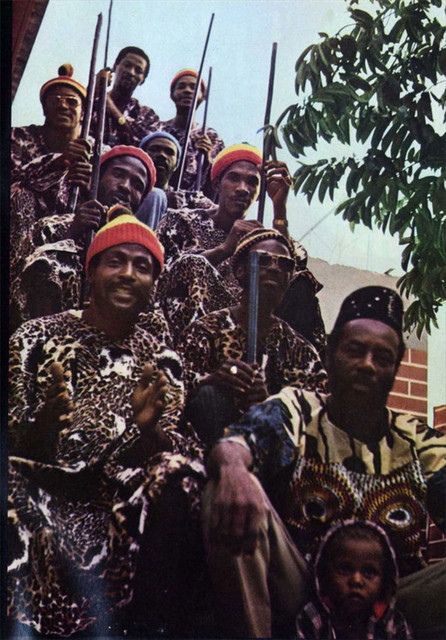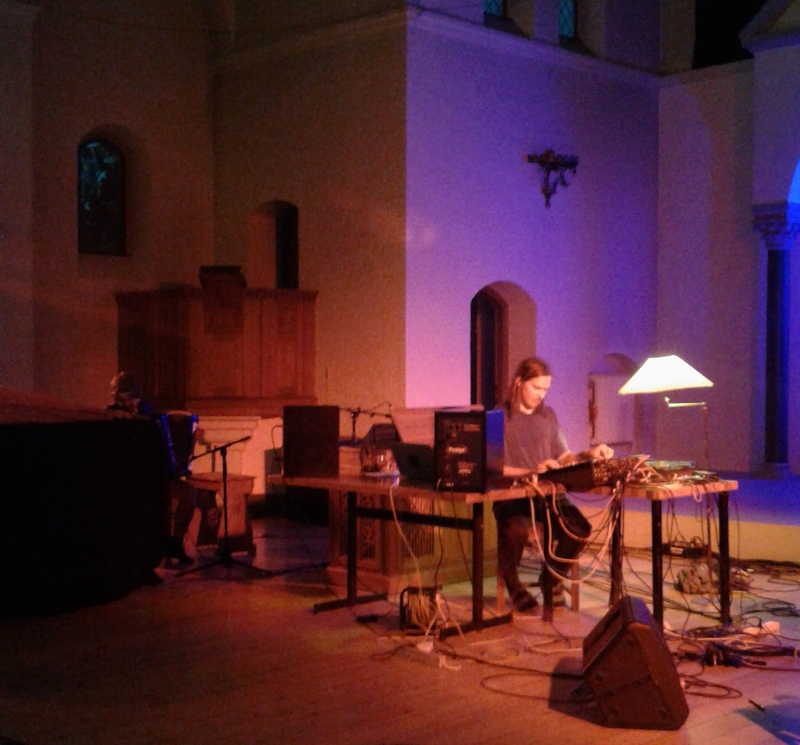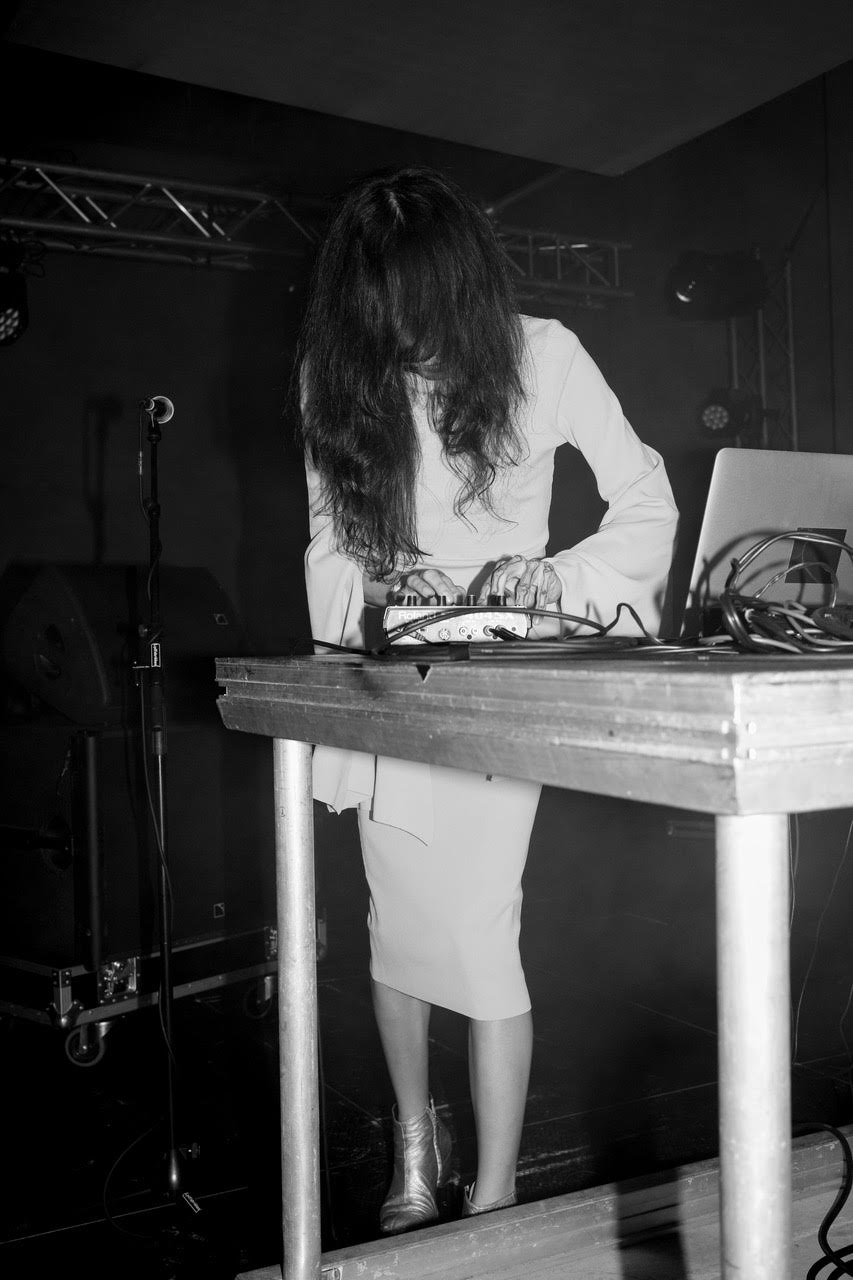Organ Sound Art Festival – adventurous organs in contemporary music
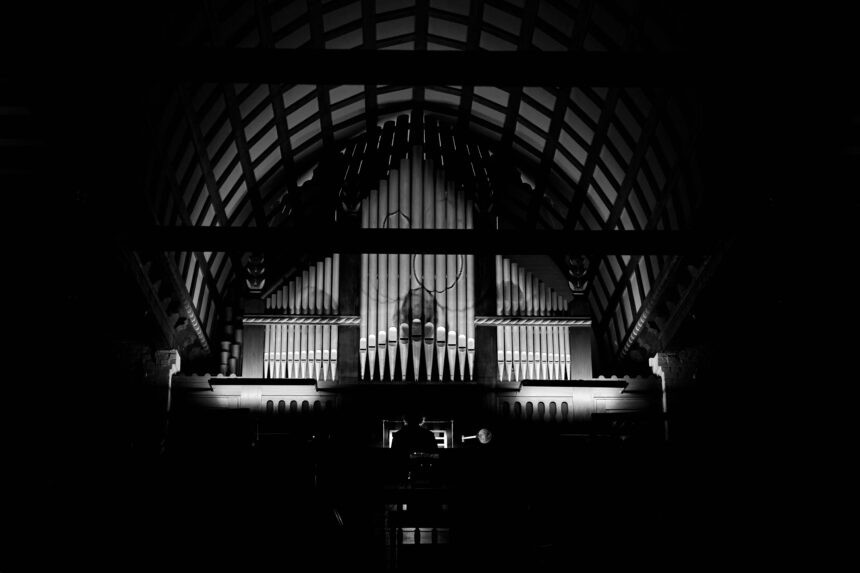
Report by Mikkel Schou, photo by Ross Adams
Finding out what the yearly Organ Sound Art festival is about is actually hard. Beyond social media marketing and the year’s program, there’s not much information online. A casual glance at the program reveals that the scope of the festival is ambitious. Premiers of newly commissioned works every day are presented together with a host of international artists, most for the first time in Copenhagen, and several bringing their innovative and self-designed organs to boot. But the sparse information, put together with the title of the festival, makes me curious about what the curatorial angle is – just what is “Organ Sound Art” ? Is it a specific genre of sound art coined by artistic director Jan Høgh Stricker and KoncertKirken’s director Björn Ross or is it just an umbrella term giving space in the program to both music, sound art and performance?
I visited the festival on the 2nd and 3rd night, so the first concert I experienced was by Swedish organ super-star Hampus Lindwall. It started strong with Phil Niblock’s “Unmounted / Muted Noun” (2019), a 20+ minute long work for organ and pre-recorded tracks. It was drones, cacophony, dissonance and more drones. If it had just gotten a tad more sub and been a bit louder, I’m confident it would have made the entire room resonated and been truly immersive. Regardless of that, it still left a big impression on me. However, the concert only went downhill from there. Beforehand Lindwall advertised that he had just generated the short algorithmically derived works by Cory Arcangel that he was playing tonight, and that we could easily generate thousands more at home if we wanted. I strongly doubt anyone felt an inclination to, as the works, which consisted of repeating chords and short figures, were exhaustingly predictable and conceptually starved. Similarly, Lindwall’s own composition for organ and electronics seemed more like an etude in organ improvisation and digital sound processing techniques, setting out to exhaustively audition all possible variations of the iPad software Lindwall was using to process his playing instead of aspiring to be a coherent piece of music.
“How do you evaluate something which can seemingly create endless variations of itself?”
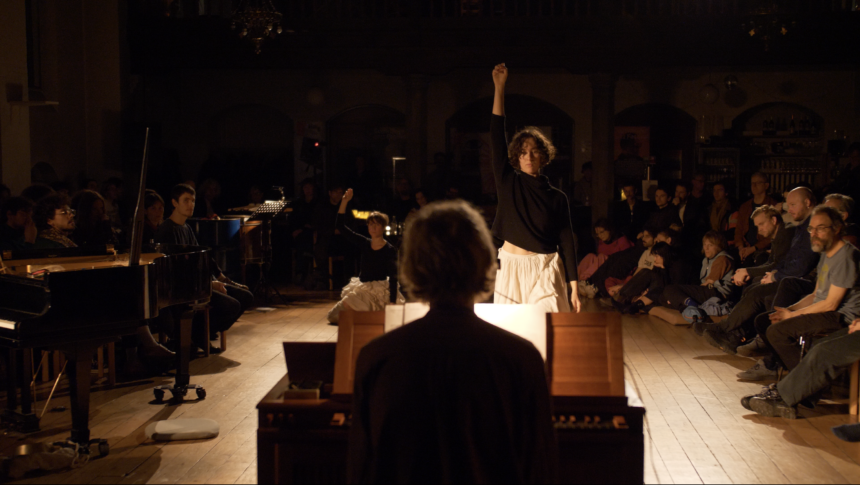
The level of ambition was much higher in composer and pianist Matt Choboter’s “And Then There Were The Sounds Of Birds” (2023) commissioned by the festival and developed in collaboration with percussionist Ying-Hseuh Chen, dancers Neža Kokalj & Paulina Rewucka, and electronic musician Simon Wetterstrøm Mariegaard. A ephemeral and beautifully fragile organ duet opened up a metaphorical room that the two dancers filled physically by engaging in what was described as “process-choreography”. Crawling on the floor in slow motion, invoking animal-like gestures and at times moving like classical dancers, once started the dance was non-stop. There were moments of convergence, often with electronic feedback or percussive hits, but as a whole the impression was that of intuitive processes existing simultaneously yet distinctly separated. Nonetheless, the formal and musical aspects of the work were quite well defined, with a clear progression towards and from elements, often new configurations of different percussion instruments, or in the electronics, where a section with a hauntingly beautiful processed organ recording was especially effective. The flickering light aimed (at least partially) at the unused microphone stand transformed into symbolic, albeit most likely unintended, staging for me, as the piece’s lack of discursive elements (besides a poem in the program text) made it a demanding task to contextualize its inherent logic, meaning and concepts. How do you evaluate something which can seemingly create endless variations of itself? “It’s like it exists outside of the world I’m in”, remarked a friend.
“Everyone is making drone music these days, aren’t they?” my German friend says the next day. We just finished listening to Lil Lacy and Malthe Madsen’s descriptively titled four-channel work “Organs”, which was almost entirely one long drone consisting of numerous superimposed field recordings of organs from both Denmark and the Faroe Islands. While I won’t blame a reader for expecting the work to be somewhat insipid based on the above one-line description, in fact Lacy and Madsen artistically excelled in their restraint and compositional absence. Not as composers but as sound artists, as the work’s strongest kinship was rather to a canon of field recorded soundscape art (from artists such as Chris Watson and Francisco López) than drone music. Organs are just drony, you know. Mainly recorded from inside the organ pipes, like a sonic documentary, the work captured the organ’s inner world, the organs organing, and invited us into the midst of it. A strange but compelling world, with strained creatures gasping for air, creaking and noisy, communicating together by bassy roars and by sustained beating (interference patterns created by two frequencies tuned slightly apart). But it also staged the instruments in the real world, as paragons of deep seated solitude and loneliness, spread out over the Nordic region.
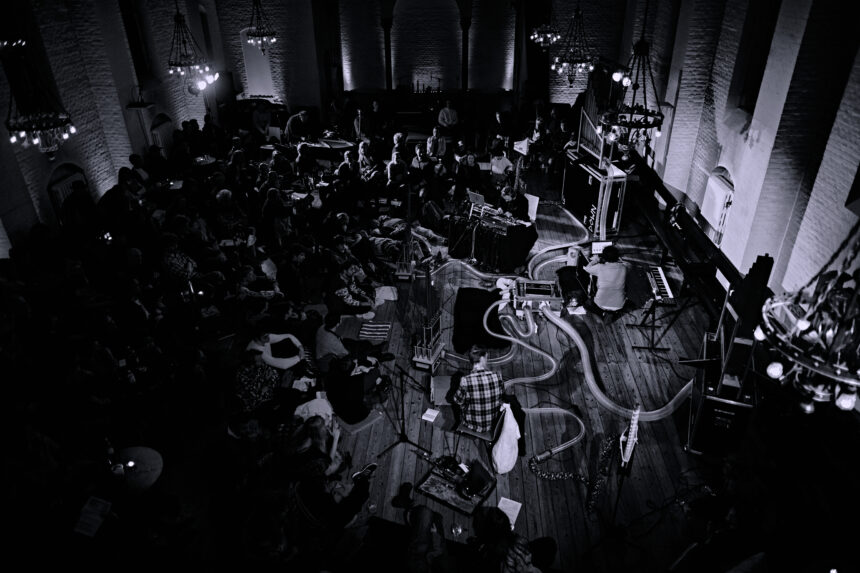
Norwegian composer Aron Dahl’s new work for the historically significant synthesizer the Buchla Easel (first built in 1973) played by Dahl, and Christian Rønn on the organ had a less distinct vision. The work was described as bridging the gap between the “world’s oldest synthesizer” (the organ) and traditional additive synthesis embodied in the Easel, but the premise fell short as Dahl employed the Easel in a way far removed from the music of the 1970’ies, rather evoking it’s ambient potential in a way reminiscent of how italian synth-genius Allessandro Cortini in recent years has redefined the instrument. Of course that’s not a problem in and of itself, but the significant sonic overlap in the droney soundscapes made the organ appear quite anonymous, and Dahl never quite reached the emotionally charged invocations of Cortini, lacking the sublime treatment of noise and distortion that really sets him apart. Nonetheless, the work was beautiful, absolutely, but quite forgettable too. And while the four piece band Pancrace’s self-built organ seemed like a marvelous invention, their promising set, which started on a high note with ironically jolly melodies on the organ, quickly derailed and became as musically unfocused as their instrumental investigations were interesting. A pity since there were truly fantastic moments (such as when a performer performed “heart massage” on the central organ module to make it breathe in and out, or in another section when the pianist vacuumed the inside of the piano).
My festival highlight was the trio consisting of Hanne Lippard together with Ellen Arkbro and Hampus Lindwall on organs, who presented a conceptually virtuosic performance on Friday night. A highlight was Phil Harmonic’s work Timing (composed in 1979 for “Blue” Gene Tyranny’s incredible recording Just for the Record). With a startling vocal clarity. Lippard spoke the words “Change Now” over and over again, commandeering the two organs (tuned 7 hz apart) to change pitch. It was serene and almost anesthetic (the rhythmic treatment of the sentence perhaps a bit too active to be truly mind numbingly sublime). Following it was a collection of text-based pieces, presumably created by Lippard (there was no program note) whose practice is singularly focused on language. Monochromatic sounds from the organs made soundscapes well suited for imparting meaning on, and Lippard skillfully manipulated sentences seemingly appropriated from other sources (such as advertisements, self-help texts or pop songs).
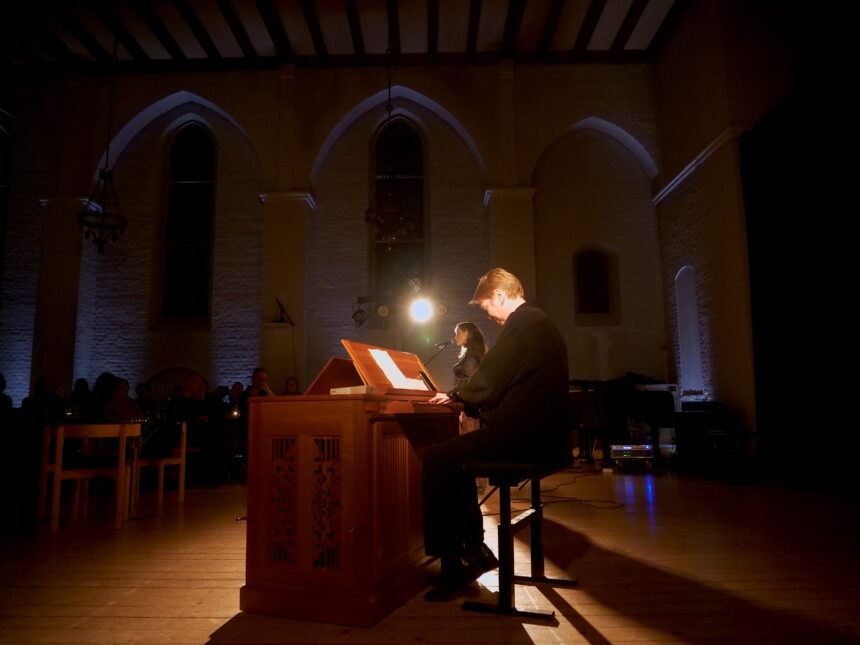
I was particularly fond of the “list” pieces, one of them created as variations of one-line words or sentences put together with the word “banking”, growing increasingly absurd and humorous (who wouldn’t like an “oops I did it again. banking”). Or the work in which the meaning of the self-contradictory sentence – this technique is easy / all you need is patience – was manipulated through repetition and intonation shifts, focusing on the linguistic breakdown and semantic absurdities in capitalist and digital advertisement forms, and our shifting perception of the language used to sell us new and presumably better products. In between, sections of descriptive passages reminiscent of Robert Ashley’s librettos propelled the narrative of the concert forward. It all ended with a one-sentence piece – At Last I Am Free, I Can Hardly See In Front Of Me – appropriated from the Nile Rodgers/Chic song with the same title. Lippard repeated the refrain over and over again, musing on the western consumerist agenda of accomplishing freedom through a refusal of consequence analysis and short-sightedness, the freedom to buy, consume and feel great about it. At least that’s what I got out of it, though the whole performance was delightfully ambiguous.
“Thankfully, sound art exists on a broad (and often heavily discussed) spectrum, and indeed all sharply drawn divides between art forms are – finally, one may add – slowly dissolving.”
Initially I set out to find out what Organ Sound Art Festival was really about, and honestly, I still don’t know. I know some things. It all happens in KoncertKirken, which is smart and cost-efficient. A day-ticket system with multiple performances with short changeovers between sets ensures that a large audience comes, and skillful programming and a festive atmosphere throughout the night ensure that they stay for everything. Usually when festival’s employ cost-effective strategies like this, it means that the artwork suffers as a result, but Organ Sound Art Festival’s singular focus on well, the organ, actually seems to mitigate this to a large degree. Thankfully, sound art exists on a broad (and often heavily discussed) spectrum, and indeed all sharply drawn divides between art forms are – finally, one may add – slowly dissolving. Interestingly, the program for the Organ Sound Art Festival 2023 was almost entirely devoid of audiovisual works. Are Stricker and Ross visionaries or behind the times? Video works are still everywhere on the European experimental music scene, but to me it seems clear that artists and audiences crave other forms of expression. And most major festivals are opting to include far more diverse formats for experimental sound, such as site-specific and interactive art, performative music theater and performance-installations.
On the surface the Organ Sound Art Festival seems to be primarily situated in between experimental music concerts, sound art and performance art. Unfortunately the festival’s only installation work – Mads Kjeldgaard’s aptly titled ‘Internal Organs’ – felt somewhat out of place. The staging was good though, with dark curtains hanging from the ceiling and forming a closed off cube around two comfortable chairs situated in the middle of KoncertKirken’s basement. Based on physical modeling of organs, the generative work also felt impressively defined, as it crossed through territories of typical organ polyphonic music, drones and glitches. But it stood so alone that I got the strong impression that guests of the festival were not there to see installation(s), and indeed everyone else checking it out while I was there stayed for half a minute or so. KoncertKirken is most definitely not a gallery and Organ Sound Art is at least only marginally about installation works. But hey, there’s also something positive to say about the performance situation where people can’t leave at the first inclination of boredom anyways.
While positioning sound art in a visual arts context, which it historically has been, demands conceptual significance and critical discourse of its practitioners (a potential only realized in glimpses during the festival) positioning sound art in relation to a music context could potentially change its criteria of success and mode of exploration. What lies beyond art’s ability to reference and engage with reality? Hopefully not just a return to Absolute Music, backgrounding meaning and discourse and foregrounding the abstract and self-referential, but perhaps an investigation into sonic materialism and a sonic being in the world. Perhaps this is where organ sound art could really become distinct? At least the last performance of the festival seemed to suggest that.
“Surrounded by standing organ pipes, Japanese artis Fuji||||||||||ta’s art is both fragility incarnate and raw, uninhibited power.”
Surrounded by standing organ pipes, Japanese artis Fuji||||||||||ta’s art is both fragility incarnate and raw, uninhibited power. Noisy, mechanical and imperfect humming, acoustic sounds created by the organ pipes played like flutes, electronic sounds reminiscent of early musique concrète, distorted and powerful trance, whispering chanting and thunderingly roars, all co-existed in a ritualistic setting that ended with Fuji||||||||||ta creating extremely complex timbres on the Sho mouth organ. A self-actualizing performance, captivating, evocative and powerful. Indeed, like Ross’ seemingly endless list of “thank you’s” after the final concert, the lasting feeling is gratefulness for the fact that Copenhagen has another festival with high quality experimental music and interdisciplinary art, passionate organizers, a large and dedicated audience and sufficient resources to still go strong after eight years. And maybe I’ll find out what ‘organ sound art’ is really about next year.
Info: Organ Sound Art Festival took place in KoncertKirken on December 14-17, 2023.
